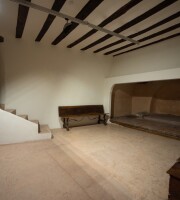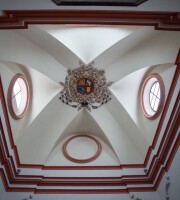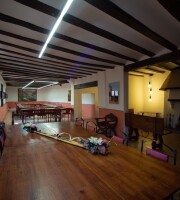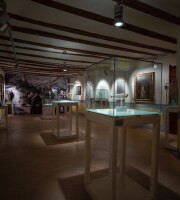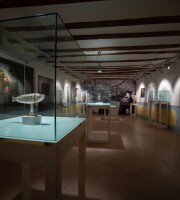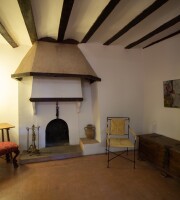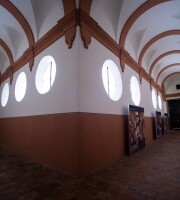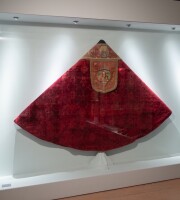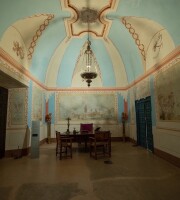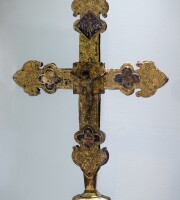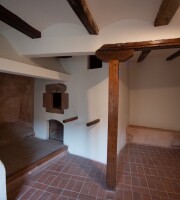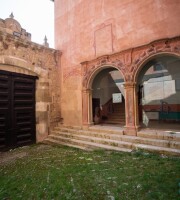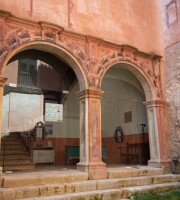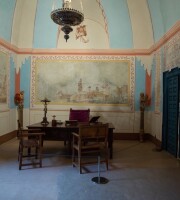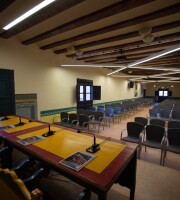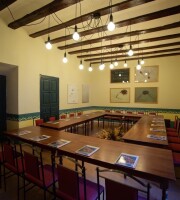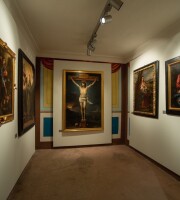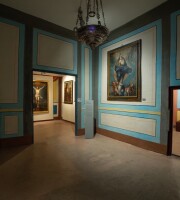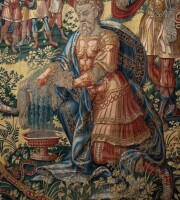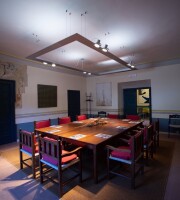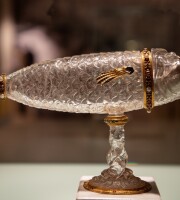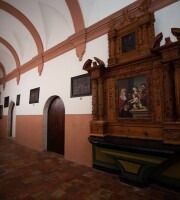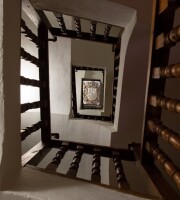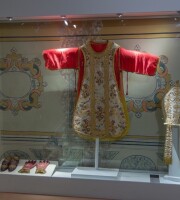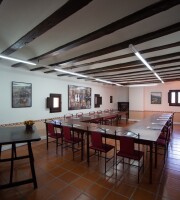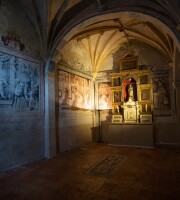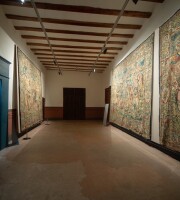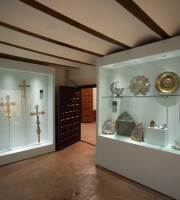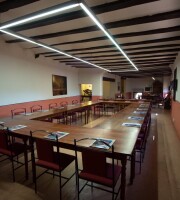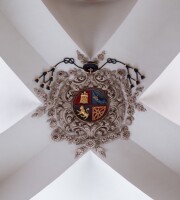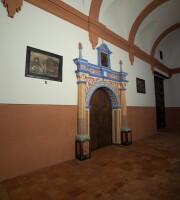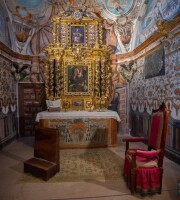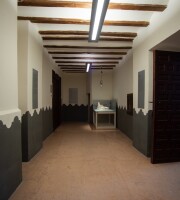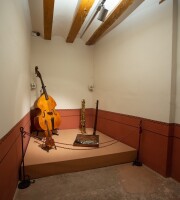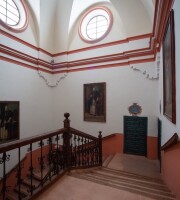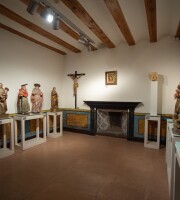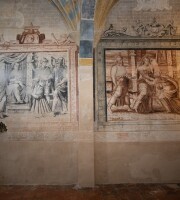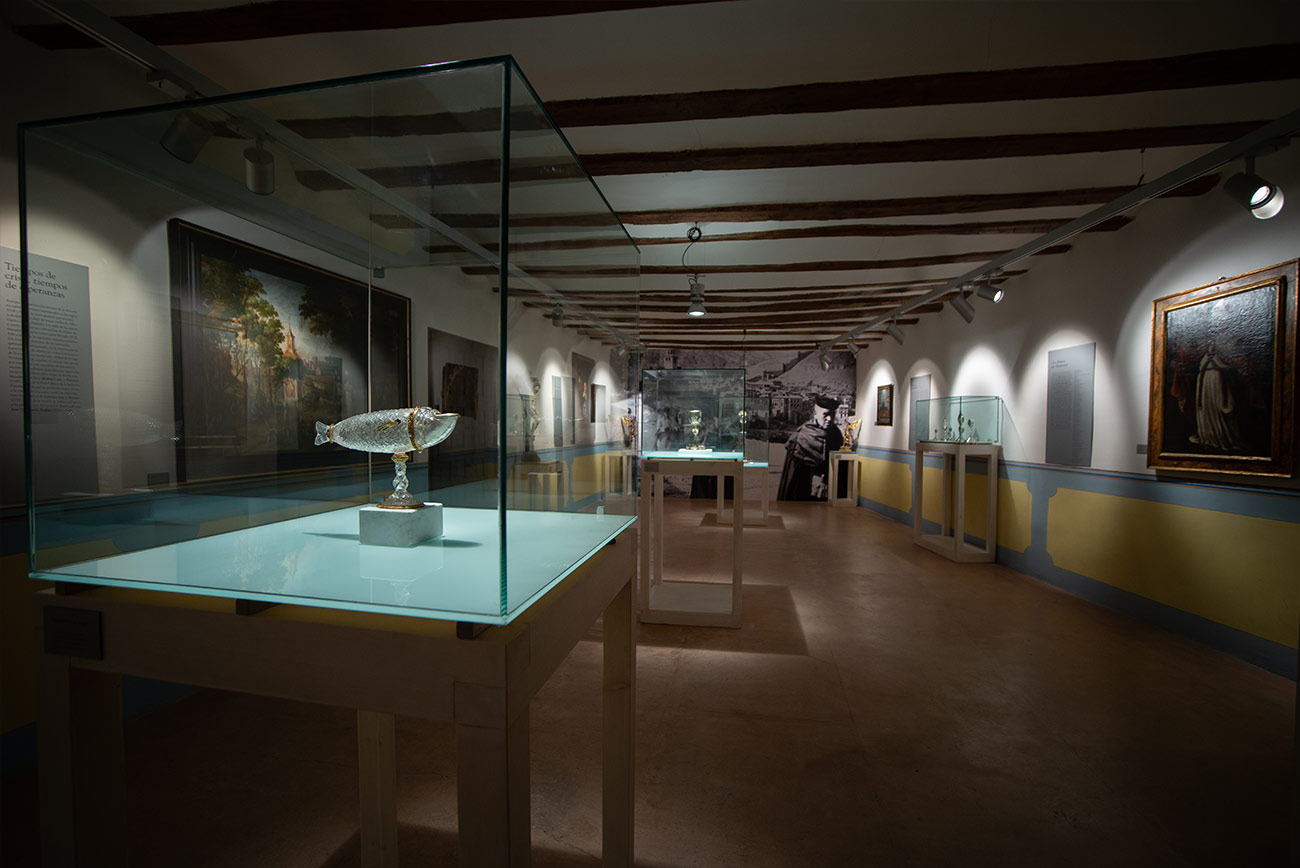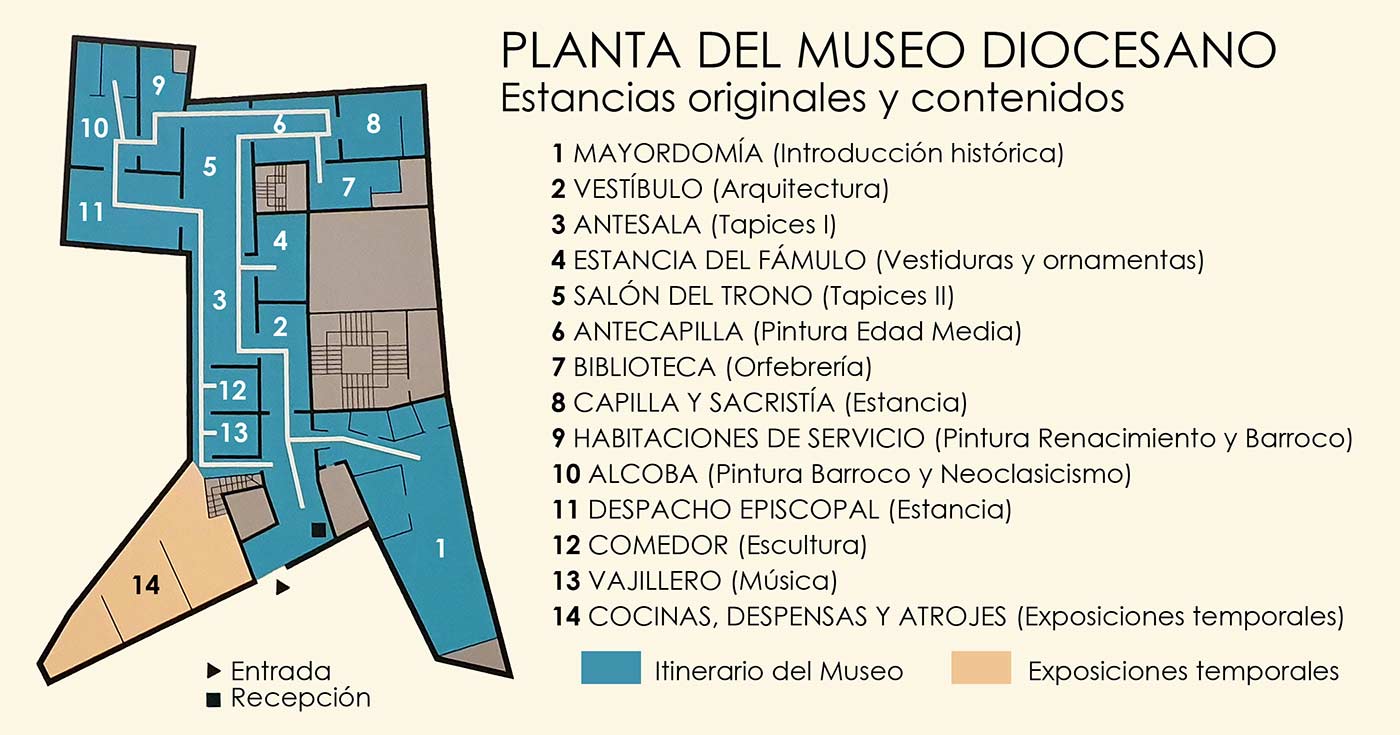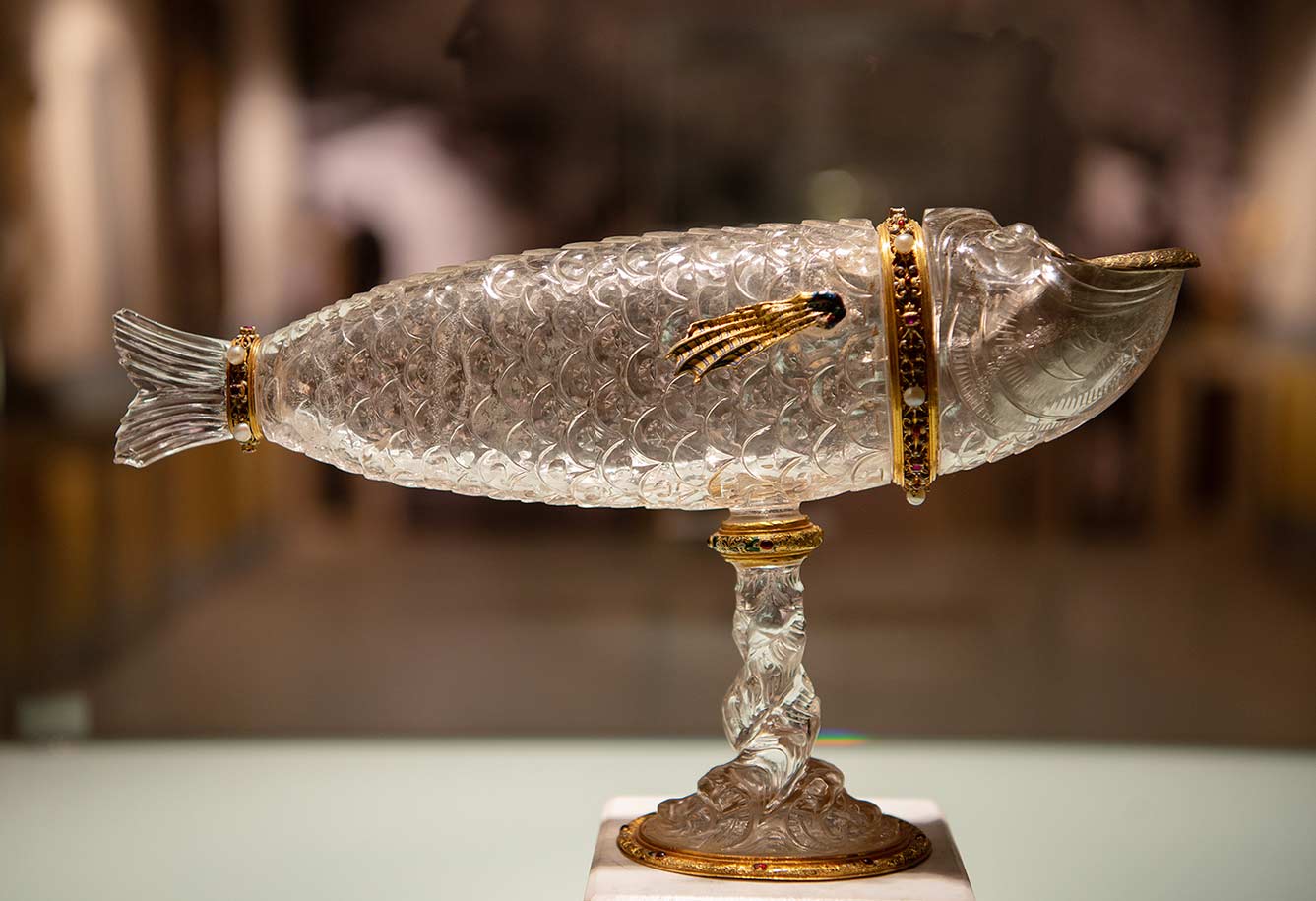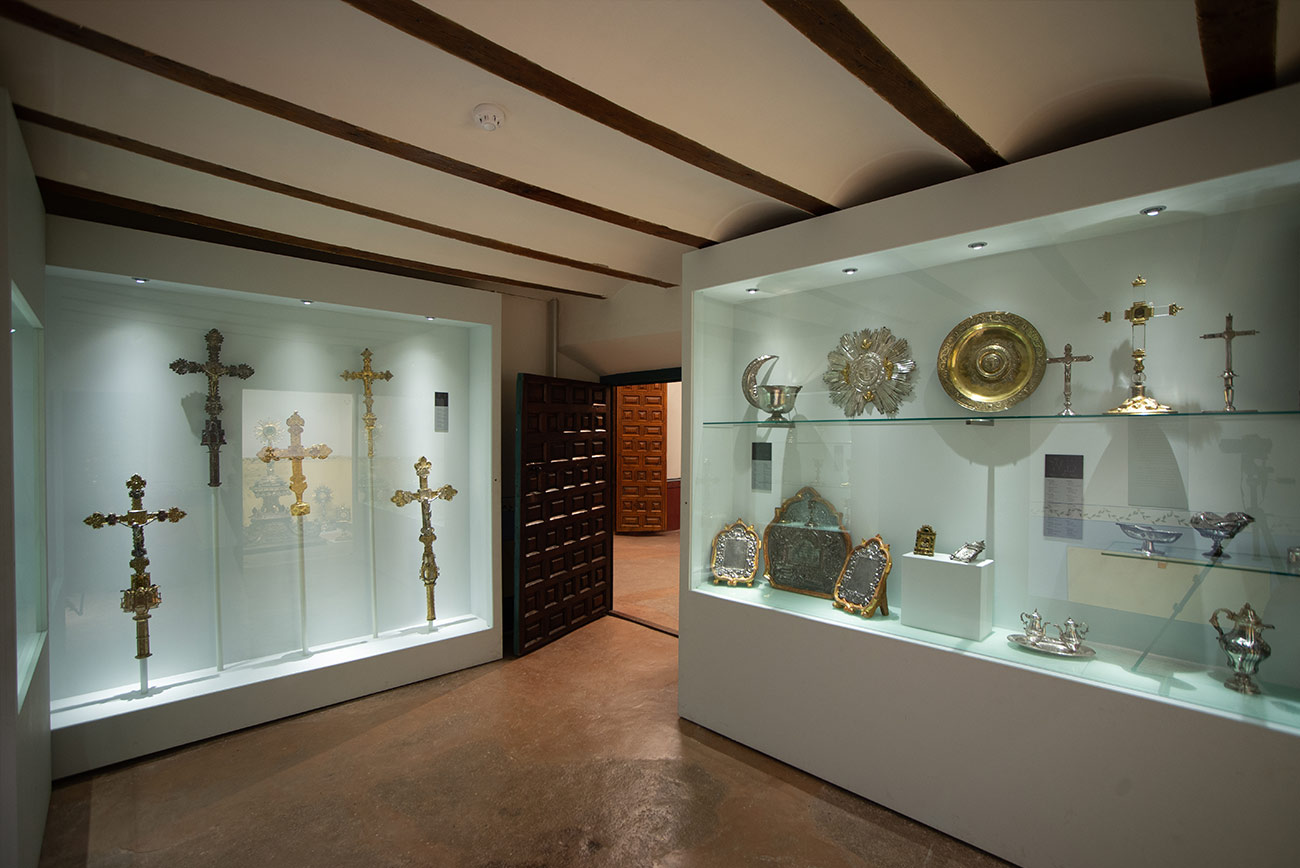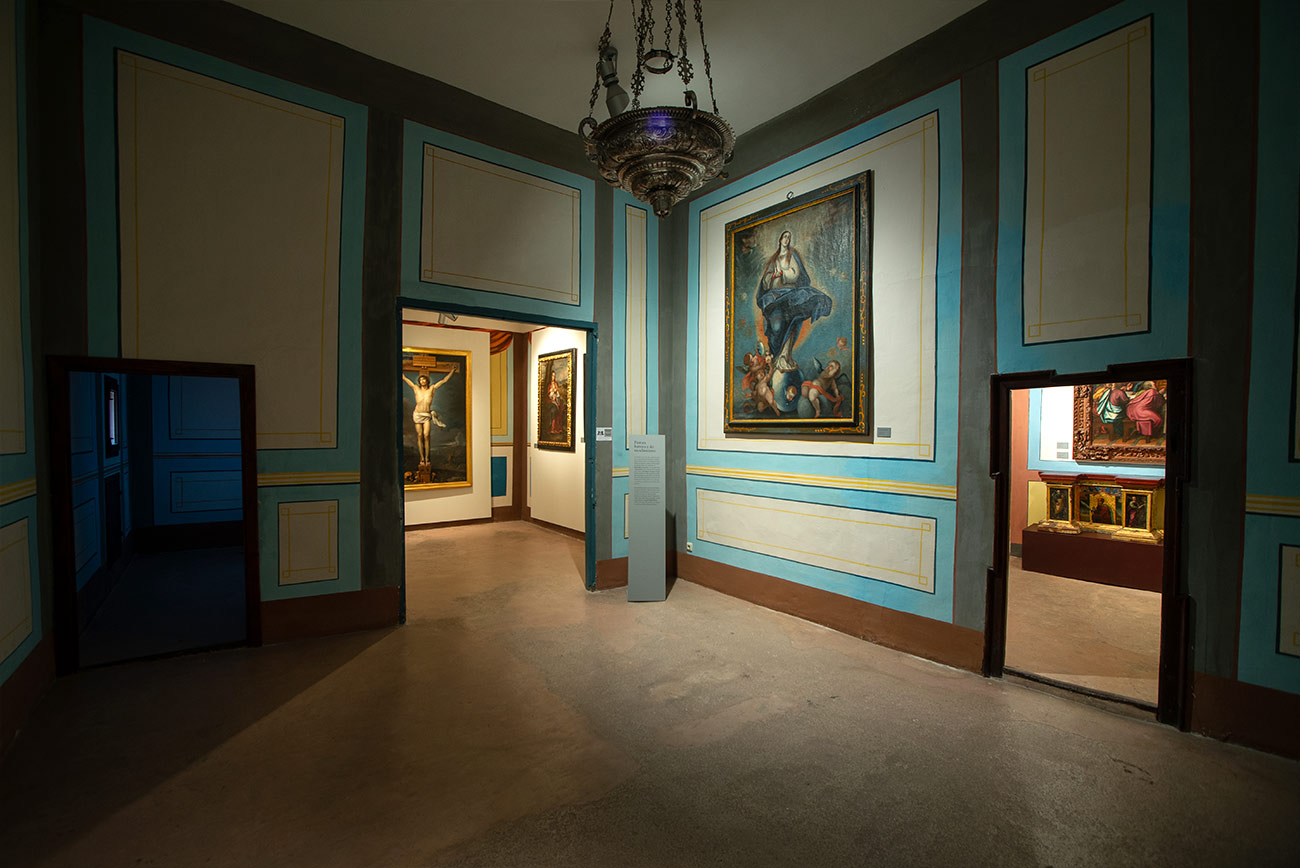Diocesan Museum
The Diocesan Museum of Albarracín is located in the former Episcopal Palace, or Bishop’s Palace, next to ‘El Salvador’ Cathedral. The episcopal complex – that is, the Cathedral and its Episcopal Palace – constitutes the main nucleus of the city of Albarracín, together with the castle or the Alcazaba. Albarracín was established from the Middle Ages as an independent diocesan headquarters (1172), already forging its own identity from the time of the Azagra family.
Both the Cathedral and the Episcopal Palace and its interesting Diocesan Museum are clearly essential for an intuitive and correct interpretation of the designs that marked the development of the city of Albarracín in the 18th century and all these appealing options are part of the programme ‘Albarracín Espacios y Tesoras’ (Albarracín Spaces and Treasures) of the Fundación Santa Maria.
The above-mentioned Palace is restrained as a whole, since this diocese was one of the smallest, most modest and humblest in Spain, and has undergone extensions and modifications over time. With the last restoration of the episcopal complex, and following an absolutely respectful intervention model, a cultural and educational use has been created as a perceptible example of the ecclesiastical way of life of the 18th century, for which it received the Europa Nostra prize in 1996.
In the building’s main area, the private rooms of the bishop or prelate – that is, the chapel, office and bedroom (numbers 8, 11 and 10 on the map) – in addition to some common rooms – like the kitchen, oven and pantries (number 14) – house the Diocesan Museum, which occupies the top floor of the Palace.
Going up the staircase in front of the Cathedral’s vantage point, you can access the cathedral cloister, where there is a door that now leads to the Diocesan Museum (see the map of the Museum with a proposed itinerary for the visit). In the first room, known as mayordomía (stewardship) or diocesan administration (number 1 on the above-mentioned plan), the historical evolution of the Diocese of Albarracín is documented. Explained in different exhibition panels and demonstrated with pieces and small treasures such as the famous 16th-century ‘rock crystal fish’, which may be of Venetian origin and is an iconic artefact and symbol of the museum and one of the most important pieces in the collection.
Also occupying a prominent place in the mayordomía is a mid-16th-century gilded silver ‘Gothic chalice’ and a gilded silver 16th-century ‘Virgen del Pilar’, among other pieces.
Next, you enter the floor’s vestíbulo (vestibule) (number 2 on the map) with explanatory panels that offer a brief overview of the religious architecture of Albarracín and where, in turn, a model of the episcopal complex can be seen.
Back in the hall, and entering via the antesala (antechamber) (number 3 on the map) and the salón del trono (throne room) (number 5), in a large rectangular room there is an extraordinary collection of 16th-century Flemish tapestries made in Brussels that tell the story of Gideon on display. Of the eight pieces that comprised the donation, seven and a fragment of the eighth remain, and six are exhibited.
Continuing with the route, and in the oratory or estancia del fámulo (number 4 on the map), you can view some collections of the liturgical vestments and ornaments owned by this diocese, which are on display in a rectangular room. The oldest piece is a crimson velvet ‘cope’ from the 17th century; with two ‘chasubles’ that are more modern. The other pieces correspond to the bishop’s own clothing: a mitre, a pair of gloves and a pair of shoes that, together with the stockings, prelates used to wear for solemn services.
In the antecapilla (antechapel) (number 6 on the map) we find some Gothic paintings that, together with the Gothic panels exhibited in the Stewardship, make up the medieval painting collection of the Diocesan Museum.
In the library (number 7 on the map), there is an outstanding collection of metalwork (chalices, crosses, monstrances, different liturgical objects, etc.) from which we highlight the “Processional Cross of Noguera”, from the late 14th-century Gothic style, made of brass plate, gold and with Byzantine enamel on the ends. Also of great relevance is a 16th-century ‘pax’ attributed to the Florentine sculptor and goldsmith Benvenuto Cellini; as well as a 17th-century ‘monstrance’ and a Calvary scene depicted in a painting with an ebony frame and figures in silver relief.
Next, we will pass through a double door with ornate architectural motifs into the bishop’s private chapel (number 8). It is a Baroque chapel, decorated with a mural featuring traditional-style still lifes, which almost completely cover the walls. The front is occupied by an ornate 18th-century gilded and polychrome altarpiece, presided over by the Virgin of the Rosary. The Baroque atmosphere and the theatrical nature of the ensemble are impressive, and particularly noteworthy are some paintings with intriguing clerical figures that stick out behind trellising and curtains and that, in short, appear to be guarding the place.
Nearing the end of our tour, we will pass by the habitaciones del servicio (servants’ quarters) (number 9), which contain some interesting Renaissance and Baroque paintings. Next, we arrive at the alcoba del obispo (bishop’s bedroom) (number 10), decorated with Baroque and Neoclassical paintings. In the adjoining room is the despacho episcopal (episcopal office) (number 11), with a classicist ambience. On display are a 17th-century table that was used a desk and an 18th-century Mexican silver ceiling lamp.
Leaving the office by the door that connects it to the throne room and crossing the anteroom, we enter a series of rooms that include the dining room, scullery and kitchen, pantries and stores (numbers 12, 13 and 14, respectively). The dining room, presided over by a 19th-century fireplace, contains a small collection of sculptures from the 16th to 18th centuries. In the scullery there are different musical instruments used in the last, already decadent stage of the Cathedral’s musical chapel (violin, viol, ophicleide, dulcian and bassoon). Lastly, the adjacent kitchen connected to the pantry, oven and grain stores are the spaces reserved for temporary exhibitions designed by the Fundación Santa Maria.
Finally, the tour will conclude in the vicinity of the corridor that connects to the Cathedral where the visit to the Diocesan Museum started. A visit that allows us to travel through the past of Albarracín and its diocese by looking at the works and pieces exhibited; but above all, to wander around the noble floor of the bishop’s palace, thus understanding the way of life of those who ruled one of the most humble bishoprics in Spain.
